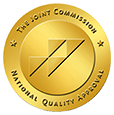
We tend to think of posttraumatic stress disorder (PTSD) as something that only war veterans experience.
The truth is that anyone can develop PTSD.
PTSD became an official diagnoses in 1980. It’s defined as a serious condition that can develop after a person has experienced or witnessed a traumatic or terrifying event in which serious physical harm occurred or was threatened. It spurs feelings of fear, helplessness and horror.
War, or course, is a traumatic event. So is rape, assault, living through a natural disaster, abuse and serious car accidents.
But the condition can also be caused by terrifying events that aren’t necessarily violent. The death of a loved one can lead to PTSD. So can witnessing a child or sibling battle a serious illness. Even extreme poverty can cause PTSD.
How Many People Suffer from PTSD?
It’s estimated that about 7 to 8 percent of the population will deal with it at some point in their lives. (It’s important to note that many people experience trauma without developing PTSD.)
Thinking of PTSD as something limited to war veterans is a problem because it can blind us to the condition of people around us—and even to ourselves.
Not only does that make it impossible for people with PTSD to get help, it also increases the likelihood that they will end up battling addiction as well.
Indeed, 53 percent of people who abuse drugs also have at least one mental illness diagnosis, according to the American Medical Association.
Some people with PTSD experience flashbacks or nightmares, but other common symptoms include hopelessness, anxiety, difficulty experiencing pleasure and loss of interest in life.
It’s easy to see how someone experiencing those feelings would do anything to escape them, even self-medicating with drugs or alcohol.
How is PTSD Diagnosed?
To be diagnosed with PTSD, at least one month must have passed since the time of the traumatic event. Your doctor will do a physical examination and review your medical history to rule out other causes of your symptoms.
Treatment for PTSD can include medication and psychotherapy.
If you’re facing both PTSD and addiction, you can’t ignore one and try to fix the other. Instead, find a rehab that has expertise in treating people with a dual diagnosis.
Recovery at The Raleigh House
The Raleigh House is a residential treatment center located in Denver that believes in a whole-person approach to recovery. Our team of experts works together to tackle both the physical and mental aspects of addiction, including any co-occurring conditions you might have like PTSD or depression. Fill out our form or contact us today to learn more about our drug and alcohol addiction treatment program.




